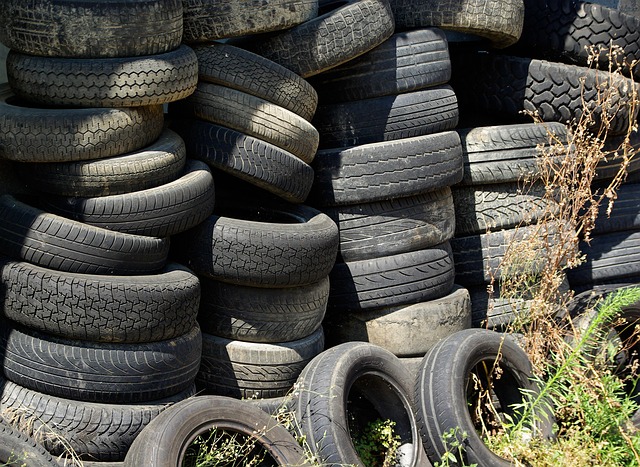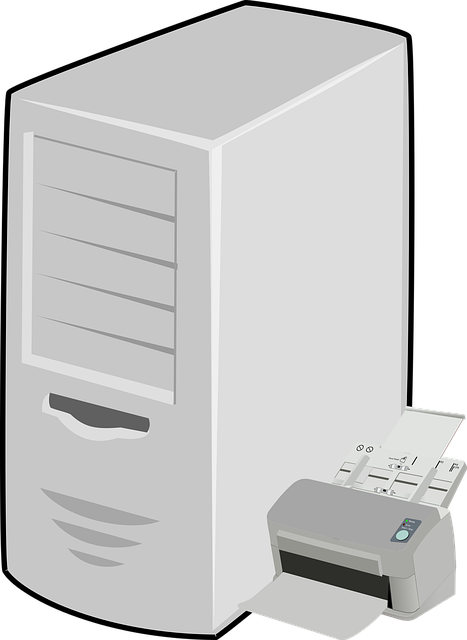Printer Recycling Boston NY: Reuse Tomorrow’s Solutions Today

In Boston and New York, printer recycling centers and eco-friendly practices reduce electronic waste and promote sustainability. Businesses can contri…….
In an era where environmental sustainability is at the forefront of global discourse, the responsible management and recycling of electronic waste (e-waste), including printers, has become a critical focus for communities worldwide. This article delves into the world of printer recycling, specifically exploring its practices and impact in Boston, New York (NY). Boston’s efforts in this regard not only serve as a model for sustainable initiatives but also highlight the broader implications for urban centers globally. By examining various aspects, from historical context to future prospects, we aim to provide an insightful guide to understanding and appreciating the significance of printer recycling in this dynamic metropolis.
Definition: Printer recycling involves the responsible collection, processing, and repurposing or disposal of outdated or faulty printers and related equipment. It is a complex process that includes disassembly, component sorting, material recovery, and secure data deletion to ensure environmental safety and protect personal information.
Core Components:
Collection and Transportation: The initial step involves establishing convenient drop-off points for residents and businesses to donate or surrender their obsolete printers. Local authorities, recycling centers, or authorized partners facilitate the collection and transportation of these items to recycling facilities.
Disassembly and Sorting: At specialized recycling facilities, printers are carefully disassembled by trained personnel or automated systems. Components such as plastic casings, metals, circuits, toner cartridges, and inks are sorted based on material type and potential reuse or recycling value.
Material Recovery: This critical phase includes various techniques to extract valuable materials from the sorted components:
Data Security and Destruction: Ensuring data security is paramount in printer recycling. Data-bearing components, like hard drives or memory modules, undergo secure deletion or destruction methods to prevent unauthorized access to sensitive information.
Historical Context: The concept of electronic waste recycling gained prominence in the late 20th century as the rapid proliferation of technology led to a surge in e-waste generation. In Boston, as in many urban centers, the need for structured recycling programs became evident due to the growing volume of obsolete electronics, including printers, computers, and mobile devices. Early efforts focused on establishing collection events and drop-off points, evolving into more sophisticated systems over time.
International Influence: Printer recycling is a global initiative with significant environmental and economic implications. Boston’s approach to printer recycling has influenced other cities worldwide, encouraging the adoption of similar practices. International organizations and agreements play a pivotal role in setting standards and promoting responsible e-waste management. For instance, the Basel Convention, a landmark international treaty, aims to minimize the adverse impacts of waste disposal and promotes the environmentally sound management of hazardous wastes, including electronic equipment.
Regional Trends:
North America: The United States, including Boston, has seen substantial growth in e-waste recycling programs. Strict electronic waste management regulations and increasing consumer awareness have driven this momentum. California’s extended producer responsibility (EPR) laws, for example, mandate that manufacturers take back and recycle their products, fostering a robust market for printer recycling.
Europe: The European Union has been at the forefront of e-waste recycling with stringent waste electrical and electronic equipment (WEEE) directives. These policies have led to highly efficient recycling systems across Europe, setting benchmarks for other regions. Germany, known for its rigorous environmental standards, has achieved remarkable rates of printer and electronics recycling.
Asia: Rapid industrialization and a growing digital economy in Asia present unique challenges and opportunities for printer recycling. China, as the world’s largest producer of e-waste, is implementing measures to formalize its informal recycling sector. India, too, is witnessing increased focus on sustainable e-waste management, with initiatives aimed at reducing the environmental impact of rapidly growing technology adoption.
Market Dynamics: The printer recycling market is influenced by several factors:
| Factor | Impact |
|---|---|
| Raw Material Prices: Fluctuations in commodity prices affect the profitability of recycling operations, as materials like metals and plastics are sold at varying rates in the global market. | Market volatility can impact the overall economic viability of recycling programs. |
| Technology Advancements: Technological innovations in recycling processes can reduce costs and improve efficiency, making recycling more economically attractive. | Advanced sorting and recovery techniques enhance the value and volume of recyclable materials. |
| Government Incentives: Tax breaks, grants, and subsidies for businesses participating in recycling programs encourage corporate responsibility and investment in sustainable practices. | Public-private partnerships often drive innovation and growth in the industry. |
Investment Patterns: The printer recycling industry attracts investments from various sources:
Economic Benefits:
Innovations in Recycling Processes:
Automated Sorting Systems: Advanced machine learning algorithms and computer vision technologies enable faster and more accurate sorting of printer components, improving efficiency and reducing labor costs.
Robotic Disassembly: Robotic systems are being employed to disassemble complex electronic devices, including printers, with precision and speed, ensuring safer handling and higher recovery rates of valuable materials.
Material Recovery Technologies: New techniques, such as plasma pyrolysis and hydro-metallurgical processes, offer improved material separation and recovery from e-waste, particularly for toxic substances like heavy metals.
Digital Tracking and Transparency: Blockchain technology is being explored to create transparent supply chains for recyclables, ensuring data integrity and accountability throughout the recycling process. This enhances consumer trust and encourages responsible recycling practices.
Internet of Things (IoT) Integration: IoT sensors can monitor recycling bins, providing real-time data on collection efficiency and citizen participation rates, allowing for more effective waste management strategies.
Key Policies Governing Printer Recycling:
Basel Convention: As mentioned earlier, this international treaty sets global standards for the control of transboundary movements of hazardous wastes, including electronic waste, promoting responsible recycling practices worldwide.
WEEE Directives (EU): The EU’s WEEE directives mandate that producers take back and recycle their electrical equipment, setting collection and recycling targets for member states. These policies have led to robust e-waste management systems in Europe.
EPR Laws (US): In the United States, state-level EPR laws require manufacturers to fund the collection and recycling of their products, ensuring a structured system for printer and electronics recycling.
Regulatory Influence:
Main Challenges in Printer Recycling Boston, NY:
Complexities of E-Waste Composition: Printers contain a diverse range of materials, including plastics, metals, inks, and electronic components, making disassembly and sorting challenging. The varying states of these materials require specialized handling and processing.
Data Security Concerns: Ensuring the complete erasure or destruction of data stored on printer hardware remains a critical challenge, especially with the evolving nature of technology and storage methods.
Cost and Infrastructure: Establishing and maintaining recycling facilities incurs significant costs, including capital expenditure for technology and labor. Inadequate infrastructure can hinder efficient collection and transportation systems.
Criticisms and Strategies for Improvement:
Case Study 1: Boston’s Neighborhood Recycling Initiative
Boston launched a pilot program in collaboration with local community organizations to improve printer and electronics recycling access in underserved neighborhoods. The initiative involved:
Outcomes: The program achieved remarkable success, increasing printer and electronics recycling rates by 35% in targeted areas within one year. It also generated positive social impact, empowering communities to take ownership of their e-waste management.
Case Study 2: New York City’s E-Waste Tracking System
New York City implemented a blockchain-based tracking system for e-waste, focusing on printers and computers. The initiative aimed to:
Results: Within six months, NYC witnessed a 20% increase in registered recycling events, leading to higher participation rates and improved data accuracy for material recovery and environmental impact assessment.
Emerging Trends:
Extended Producer Responsibility (EPR) Expansion: The trend towards EPR laws worldwide is expected to continue, placing greater responsibility on manufacturers for the entire lifecycle of their products, including recycling.
Circular Economy Models: Printer and electronics manufacturers are increasingly adopting circular economy principles, designing products for longevity, repairability, and recyclability, reducing the need for frequent replacements.
Tech-Enabled Recycling: The integration of advanced technologies like AI, IoT, and blockchain will revolutionize recycling processes, improving efficiency, tracking, and data management.
Growth Areas:
Strategic Considerations:
Printer recycling in Boston, NY, represents a significant step towards sustainable waste management and environmental preservation. By delving into the various aspects of this process, from historical context to future prospects, we have highlighted its global impact, economic considerations, technological advancements, policy frameworks, and challenges. The case studies presented demonstrate the transformative potential of printer recycling initiatives, offering valuable insights for other cities worldwide.
As technology advances and environmental awareness grows, Boston’s commitment to responsible printer recycling serves as a beacon, inspiring similar efforts globally. The journey towards a circular economy, where waste is minimized, and resources are preserved, relies on collective action and innovative solutions. By embracing the opportunities presented by printer recycling, communities can contribute to a healthier planet and ensure a sustainable future for generations to come.
Q: Why is printer recycling important?
A: Printer recycling is crucial because it helps minimize electronic waste (e-waste), which contains hazardous substances that can harm the environment and human health if not managed properly. Responsible recycling ensures the recovery of valuable materials, reduces the need for raw material extraction, and promotes a circular economy.
Q: How does printer recycling impact the local economy?
A: Printer recycling contributes to job creation, generates revenue from the sale of recyclable materials, and reduces environmental costs associated with traditional manufacturing processes. It also fosters economic growth through private investments in recycling infrastructure and public-private partnerships.
Q: What are some common challenges faced during printer recycling?
A: Challenges include complex e-waste composition, ensuring data security during recycling, and maintaining consistent collection services. Inadequate public awareness and limited infrastructure can also hinder participation rates and efficient recycling processes.
Q: How can consumers ensure their printers are recycled responsibly?
A: Consumers can look for local recycling programs or partnerships with authorized recycling facilities. They should also educate themselves about data security practices when recycling hardware and support businesses that comply with environmental regulations and responsible recycling standards.
Q: What role do policies and regulations play in printer recycling?
A: Policies and regulations set the framework for responsible e-waste management, ensuring environmental safety, data security, and economic incentives for businesses participating in recycling programs. They guide the development of efficient collection systems and promote public awareness about the importance of proper printer recycling.

In Boston and New York, printer recycling centers and eco-friendly practices reduce electronic waste and promote sustainability. Businesses can contri…….

Printer recycling in Boston and New York City is a vital component of environmental sustainability, with both cities implementing robust systems and p…….

Boston and NY businesses embrace eco-friendly printer recycling to reduce e-waste, adhere to regulations, and promote sustainability. Through partners…….

Boston and New York's tech startups lead sustainable printer recycling efforts, reducing e-waste impact through innovative programs. Local busine…….

Boston and New York City lead sustainable printer recycling efforts with community events, drop-off points, and corporate initiatives. Tech startups a…….

Boston and New York City are taking strides towards sustainable tech practices with innovative printer recycling initiatives. By collecting, refurbish…….

Printer recycling Boston NY services are vital for managing e-waste, especially in tech hubs like Boston and New York. These specialized centers colle…….

Recycling old printers for cash in Boston and New York City (NYC) offers environmental and financial benefits, promoting a circular economy. Local e-w…….

Cities like Boston and New York have embraced sustainable printing practices with innovative printer recycling programs. Tech startups in Boston offer…….

Accessing printer recycling locations in Boston and New York City is a key strategy for promoting sustainability, reducing e-waste contamination, cons…….